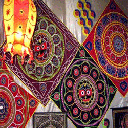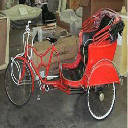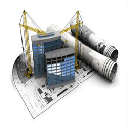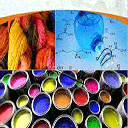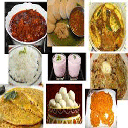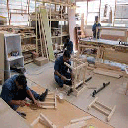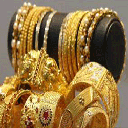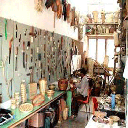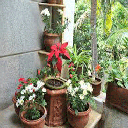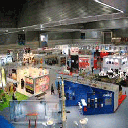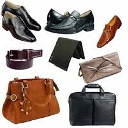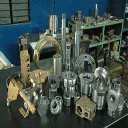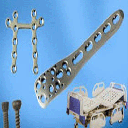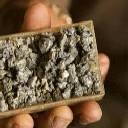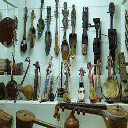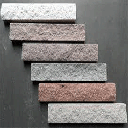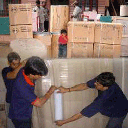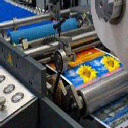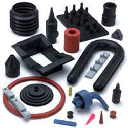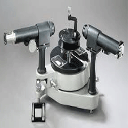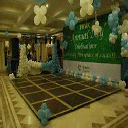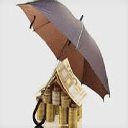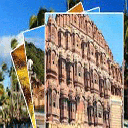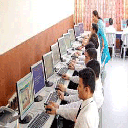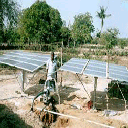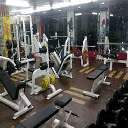It is the third smallest state of India, acoording to area. Tripura is surrounded by Bangladesh on the north, south, and west. The Indian states of Assam and Mizoram lie to the east. The capital is Agartala and the main languages spoken are Bengali and Kokborok. It was formerly an independent Tripuri kingdom and was merged with independent India on 15 October 1949 by the Tripura Merger Agreement. It was also known as "Hill Tippera" during the British Raj period and has a history of over 2500 years and 186 kings. Tripura is a landlocked hilly state in northeastern India with altitudes varying from 15 to 940 m above sea level, though the majority of the population lives in the plains. Tripura has a tropical climate and receives rainfall during the monsoons. It is surrounded on the north, west, and south by Bangladesh and is accessible to the rest of India through the Karimganj district of Assam and Aizawl district of Mizoram in the east. The state extends between 22°56'N and 24°32'N and 90°09'E and 92°10'E. Its maximum stretch measures about 184 km (114 mi) from north to south and 113 km (70 mi) from east to west with an area of 10,491.69 km². Tripura is the third smallest state of the country. Although landlocked, Tripura has many rivers including the Manu River which originates here.Agriculture and allied activities is the mainstay of the people of Tripura and provides employment to about 64% of the population. There is a preponderance of food crop cultivation over cash crop cultivation in Tripura. At present about 62% of the net sown area is under food crop cultivation. Rice is the principal crop, followed by oilseed, pulses, potato, and sugarcane. Tea and rubber are the important cash crops of the State. Tripura has been declared the Second Rubber Capital of India after Kerala by the Indian Rubber Board. Agriculture and allied activities is the mainstay of the people of Tripura and provides employment to about 64% of the population. There is a preponderance of food crop cultivation over cash crop cultivation in Tripura. At present about 62% of the net sown area is under food crop cultivation. Rice is the principal crop, followed by oilseed, pulses, potato, and sugarcane. Tea and rubber are the important cash crops of the State. Tripura has been declared the Second Rubber Capital of India after Kerala by the Indian Rubber Board. Tripura schools are run by the state government or by private organizations, including religious institutions. Instruction is mainly in Bengali or English, though Kokborok and other tribal languages are also used. Secondary schools are affiliated with the CISCE, the CBSE, the NIOS or the Tripura Board of Secondary Education. Under the 10+2+3 plan, after completing secondary school, students typically enroll for 2 years in a junior college, also known as pre-university, or in schools with a higher secondary facility. Notable higher education institutions of Tripura are MBB College, National Institute of Technology, Tripura Institute of Technology, Agartala Government Medical College, Tripura Medical College, Tripura Institute Of Paramedical Science, Tripura University, Indira Gandhi National Open University and ICFAI University all located in Agartala and outskirts of it.
Ujjayanta Palace: is a royal house in the capital city of Agartala. The Palace, built by Maharaja Radha Kishore Manikya during 1889-1901, is extends over an area of about 1 km. It is a two storied mansion, having a mixed type of architecture with three high domes, the central one being 86’ high. The palace is set with huge Mughal style gardens, beautified by pools and gardens and tiled floors. Kunjaban Palace: is at a distance of about 1 km from Ujjayanat Palace. The sub-urban Palace was built by Maharaja Birendra Kishore Maniyka during 1909-1923. Poet Rabindranath Tagore resided in the eastern apartment of this palace during his 7th and last visit to the state in 1926. The southern side of the garden is open for the public and has been named as ‘Rabindra Kanan’. Malancha Niwas :is a Bungalow adjacent to Kunjaban palace situated on a hillock. The Malancha Niwas earlier was a kaccha house but when the place was constructed, it was given the name of Malancha Niwas. Unakoti: is a Shaiba pilgrimage and dates back to the 7th – 9th centuries. The marvelous rock carvings, murals with their primitive beauty, waterfalls are not to be missed. The Unakoti is a distance of 178 km from Agartala and 8 km from Kailashahar, district headquarters of North Tripura District. Every year a big fair popularly known as ‘Ashokastami Mela’ is held in the month of April which is visited by thousands of pilgrims. Pilak :is at a distance of about 100 km from Agartala. Pilak is the treasure house of Hindu and Buddhist Sculpture. It dates back to 8th and 9th centuries. Beautiful images scattered over an area of about 10 Sq. Km. have been found at Pilak. Tripura Sundari Temple: is located in Udaipur, the district headquarters of the South Tripura district. This temple is one of the 51 pithasthans in India as per Hindu mythology. In the eastern side of the temple, there is a famous Kalyan Sagar where large fish and tortoise are found and devotees feed them with "muri" and biscuits. Fishing is not permitted in the Kalyan Sagar. Every year on Diwali, a famous Mela takes place near the temple which is visited by more than two lakhs pilgrims. The Fourteen Goddess Temple: is located at a distance of 14 Km from Agartala at a place called Old Agartala. Near the sacred 14 goddess temple during the month of July, every year a Kharchi festival is organised and thousands of pilgrims and devotees visit this festival. Neermahal :is the only lake palace in eastern India. The palace was constructed in the 1930 by Maharaja Birbikram Kishore Manikya Bahadur. The construction of the palace was undertaken by Martin & Burn Co. The palace is built in the middle of a natural lake called Rudrasagar The Bhuvaneswari Temple: is situated at Udaipur. The temple finds close literary reference in Great poet Rabindranath Tagore’s novels and drama namely ‘Bisharjan’ and ‘Rajarshi’ Sepahijala :is a wildlife sanctuary in Tripura. The wildlife sanctuary is 25 km from Agartala on Agartala Udaipur main road. More than 150 species of residential birds, migratory birds, orchid garden, boating facilities, wild life, botanical garden, zoo, elephant joy-rides, rubber and coffee plantation attracts the visitors. The famous spectacled monkey is found here. Trishna Wild Life Sanctuary :is located at about 100 Km. away from Agartala in Belonia Subdivision of South Tripura District. The main attraction in this sanctuary is the Bison. Museum The Tripura Government Museum: in Agartala was established in the year 1970. The museum houses some of the rare stone images, old coins, and archaeological articles from Tripura. The museum also houses some very exquisite items of stone and other archeological items excavated from the adjoining areas. This is the most ideal place to see and know about the culture and tradition of Tripura's past and present.


